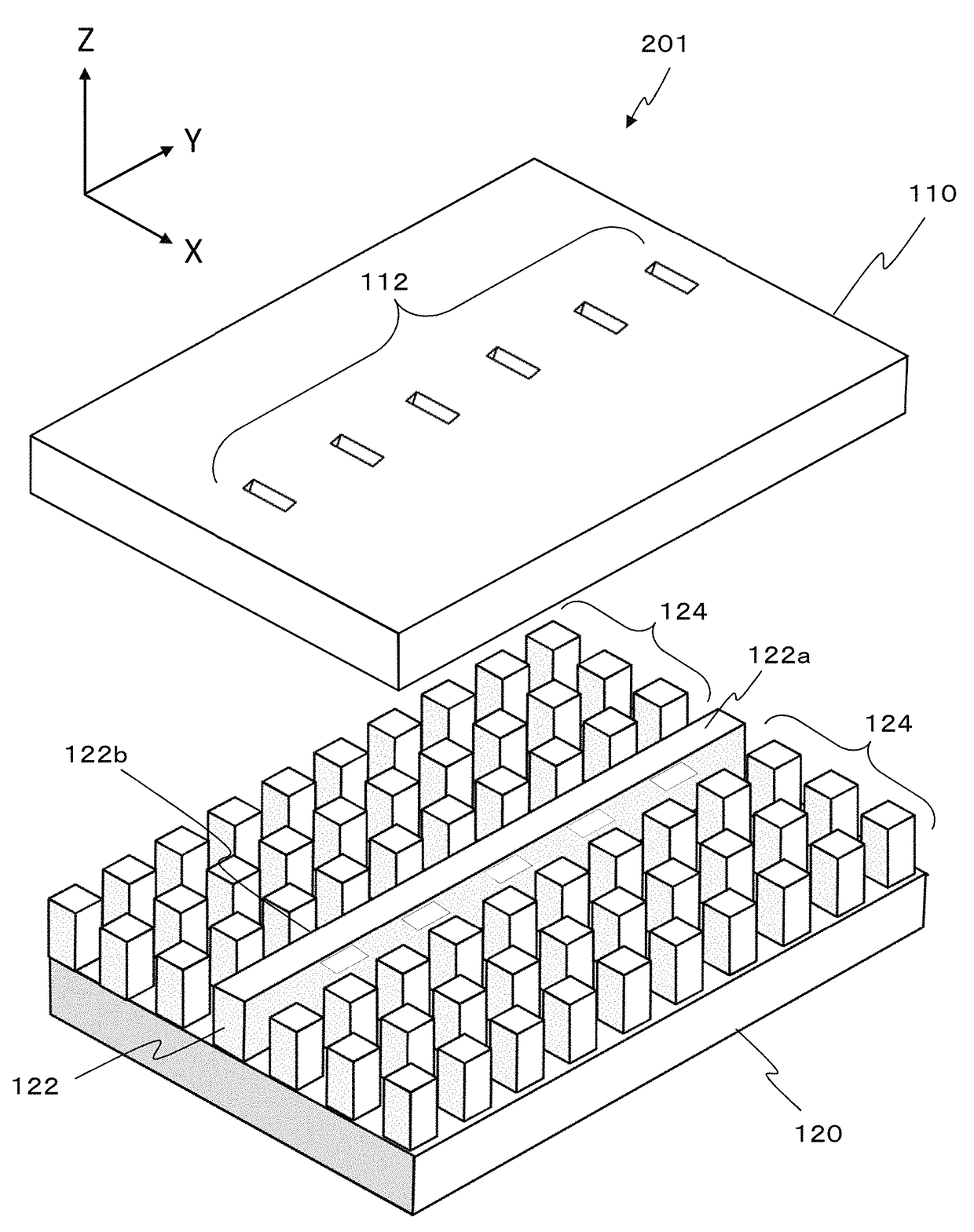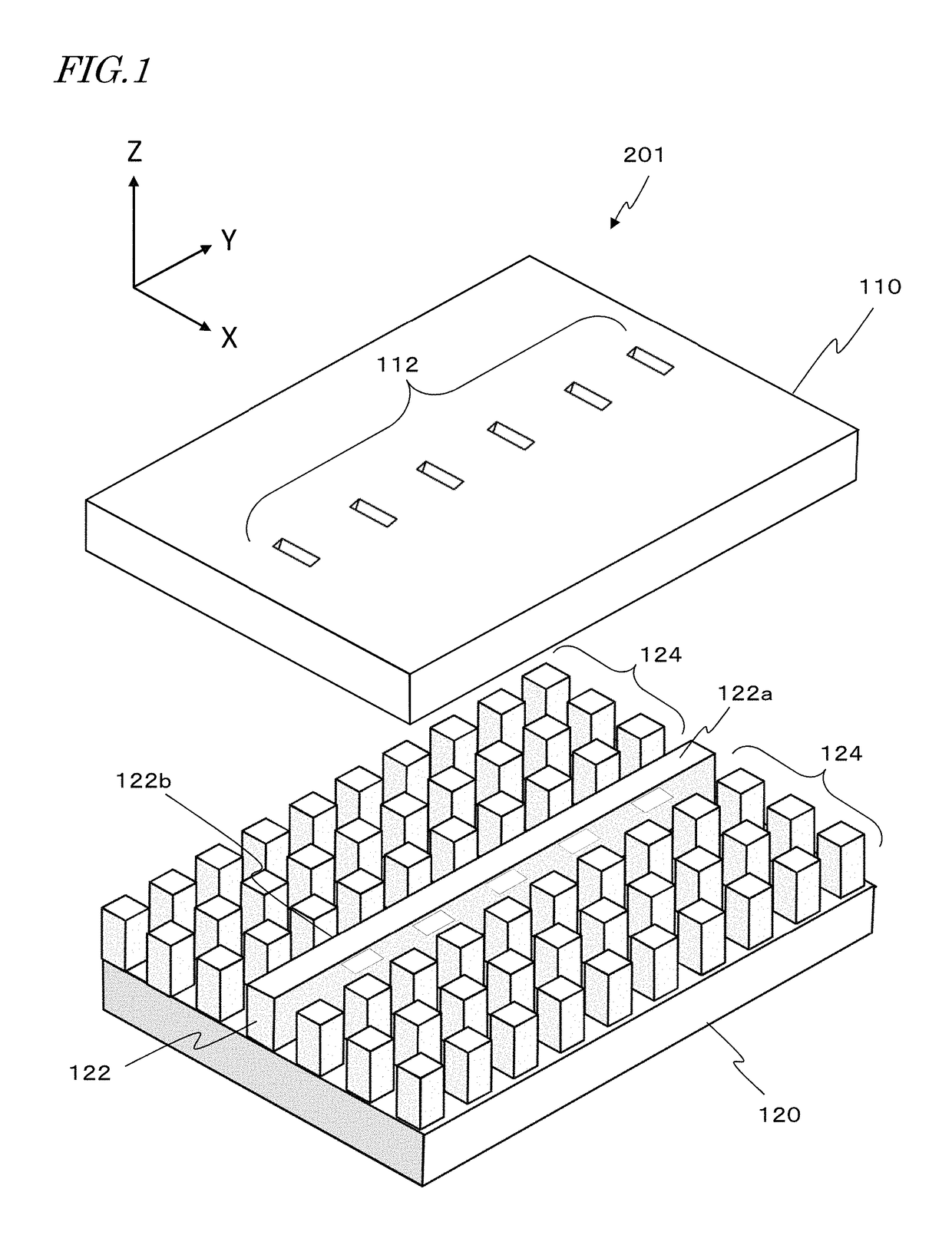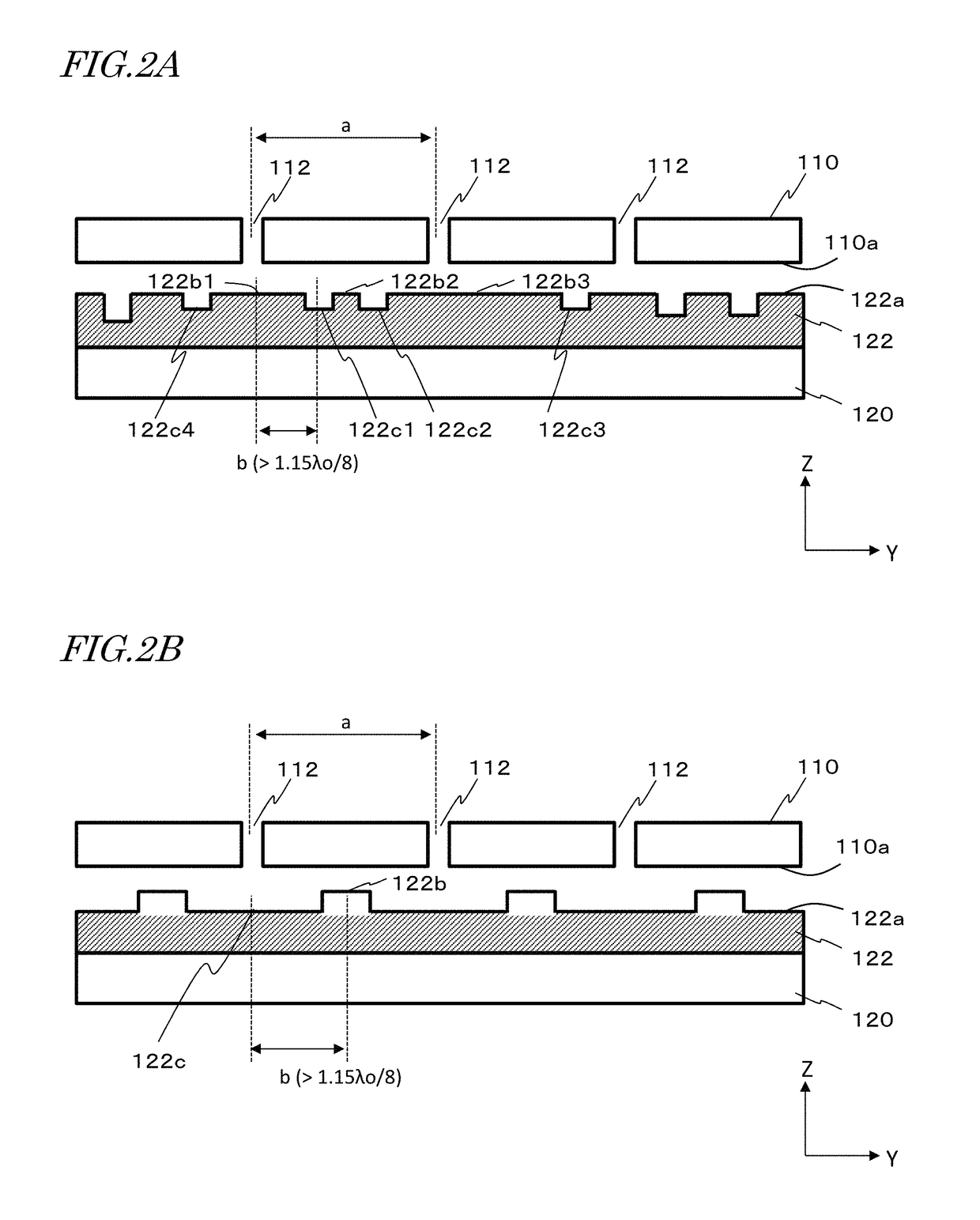Slot array antenna
a technology of array antennas and antenna elements, applied in the direction of individual energised antenna arrays, waveguide mouths, waveguides, etc., can solve the problems of affecting the efficiency of the antenna, and difficult to dispose of antenna elements with a high density
- Summary
- Abstract
- Description
- Claims
- Application Information
AI Technical Summary
Benefits of technology
Problems solved by technology
Method used
Image
Examples
embodiment 1
[0203]Embodiment 1 relates to a slot array antenna (which hereinafter may simply be referred to as an “array antenna”) to which standing-wave series feed is applied in order to excite a plurality of slots with an equiamplitude and equiphase and achieve a high gain. The slot array antenna according to the present disclosure is not limited to a construction where the plurality of slots are excited with an equiamplitude and equiphase; however, for ease of understanding the invention, the present embodiment will illustrate a slot array antenna which achieves equiamplitude-equiphase excitation to maximize the gain, this being the simplest example.
[0204]First, the principle of standing-wave series feed will be described.
[0205]FIG. 10 is a principle diagram showing an exemplary array antenna under ideal standing-wave series feed. FIG. 11 is a Smith chart representation of an impedance locus at different points in the array antenna shown in FIG. 10, as viewed from the antenna input terminal...
embodiment 2
[0231]FIG. 19A is a perspective view showing the structure of an array antenna 1001 according to a second embodiment of the present disclosure. FIG. 19B is a cross-sectional view of the array antenna shown in FIG. 19A, taken along a plane which extends through the centers of a plurality of radiating slots 112 and the center of a ridge 122. In the present embodiment, too, according to the principle of standing-wave series feed, every radiating slot 112 is designed in a resonant state so that its radiation impedance equals its pure resistance component. Moreover, all radiating slots 112 are of an identical shape.
[0232]In the present embodiment, in order to control the wavelength and phase of a standing wave, structures that are distinct from other partial paths, i.e., bumps 122b, are provided as additional elements on the WRG. The bumps 122b are disposed so that, in each region between two adjacent radiating slots 112, a combination of identical bumps 122b are provided symmetrically o...
application example 1
[0287]Next, as an Application Example of utilizing the above-described slot array antenna, an instance of an onboard radar system including a slot array antenna will be described. A transmission wave used in an onboard radar system may have a frequency of e.g. 76 gigahertz (GHz) band, which will have a wavelength λo of about 4 mm in free space.
[0288]In safety technology of automobiles, e.g., collision avoidance systems or automated driving, it is particularly essential to identify one or more vehicles (targets) that are traveling ahead of the driver's vehicle. As a method of identifying vehicles, techniques of estimating the directions of arriving waves by using a radar system have been under development.
[0289]FIG. 33 shows a driver's vehicle 500, and a preceding vehicle 502 that is traveling in the same lane as the driver's vehicle 500. The driver's vehicle 500 includes an onboard radar system which incorporates a slot array antenna according to any of the above-described embodimen...
PUM
 Login to View More
Login to View More Abstract
Description
Claims
Application Information
 Login to View More
Login to View More - R&D
- Intellectual Property
- Life Sciences
- Materials
- Tech Scout
- Unparalleled Data Quality
- Higher Quality Content
- 60% Fewer Hallucinations
Browse by: Latest US Patents, China's latest patents, Technical Efficacy Thesaurus, Application Domain, Technology Topic, Popular Technical Reports.
© 2025 PatSnap. All rights reserved.Legal|Privacy policy|Modern Slavery Act Transparency Statement|Sitemap|About US| Contact US: help@patsnap.com



